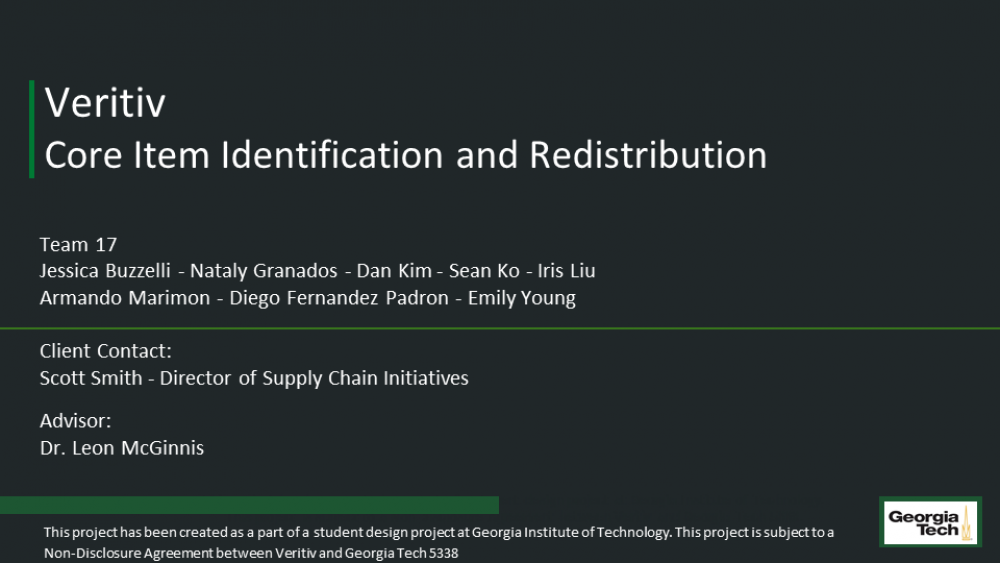Client Context
Veritiv Corporation is a North American business-to-business distributor offering an extensive catalog of products with customization services. Once a client places an order, Veritiv routes that order through three possible sales channels. This project focuses upon the “warehouse” channel, in which the product is carried in Veritiv’s warehouses and is shipped by Veritiv's fleet to the client's local warehouse(s). 160 distribution centers function in the current system, contained within independent hub-and-spoke networks. The focal points of the project are the supply networks positioned in the continental United States east of the Rocky Mountains, within the packaging and facility solutions segments.
Project Objective
Formed through a merger and grown through acquisition and customization offerings, Veritiv has inherited a wide product catalog and numerous warehouses. In order to free up capital and eliminate unprofitable items, Veritiv aims to cut down their catalog. Based on performance and client risk, products can be evaluated as core to the business or as eligible for elimination or replacement. Additionally, hub-and-spoke clusters function largely independently, leading to expensive shipments from one corner of the system to the other in case of shortage. This, as well as the sheer number of warehouses in the system, presents a unique case for consolidation.
Design Strategy
To tackle the two major challenges presented by Veritiv, two phases were developed. The first was a customizable multi-dimensional analysis which selected which SKUs to eliminate to shift more of their focus and investment on core items. For validation, correlation tests were conducted to find the best combination of factors to consider with the most independence, and summary risk statistics were calculated to account for potential client-related risks tied to eliminating SKUs. The second challenge was addressed through a classic facility location optimization model, which prioritized minimizing costs by analyzing the tradeoff between warehouse operational costs and transportation costs. Case studies on two hubs were conducted before the model’s development to validate consolidation, and sensitivity analysis was conducted on the output of the model to shift bias to transportation costs.
Deliverables
The GUI is customizable and allows Veritiv to input their product catalog at warehouse, hub, or enterprise level. Once in, they can select which factors they want to prioritize when selecting core items and can add on any filters to minimize client flight risk. The GUI then outputs a sheet with the products that should be kept as well as many summary statistics to analyze the risks associated with eliminating specific products. This list of core items by customer and warehouse can then feed into the optimization model, which outputs the specific warehouses that should be kept and where each of the products should be stored to meet local demand. The team’s recommendations include having 20% of items identified as core in the North Central Region and eliminating underperforming SKUs. The model also simplified their distribution network to 12 warehouses of the 69 currently making up their businesses in the U.S. East of the Rockies.


